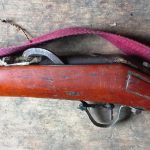Mentawai people use five types of carrying baskets, which they call Opa, Tuku, Jarakjak, O’orek, and Bolokbok.
Opa – the standard-sized carrying baskets.
Opa are the most popular type of carrying baskets. They are entirely woven from Calamus javensis rattan vines collected from the surrounding forests. Primarily, men use them as their ‘standard backpack’ to carry small fruits, other agricultural produce, and lightweight items.
These baskets are about 70 cm (28’’) high with an inner diameter of about 40 cm (16’’). Carrying straps are made from the bark of the Baikho tree (Artocarpus elasticus). That is the same material used for bark loincloths or bowstrings. A leaf sheath of a sago palm covers the backside of the basket to protect the carrier from rubbing wounds.
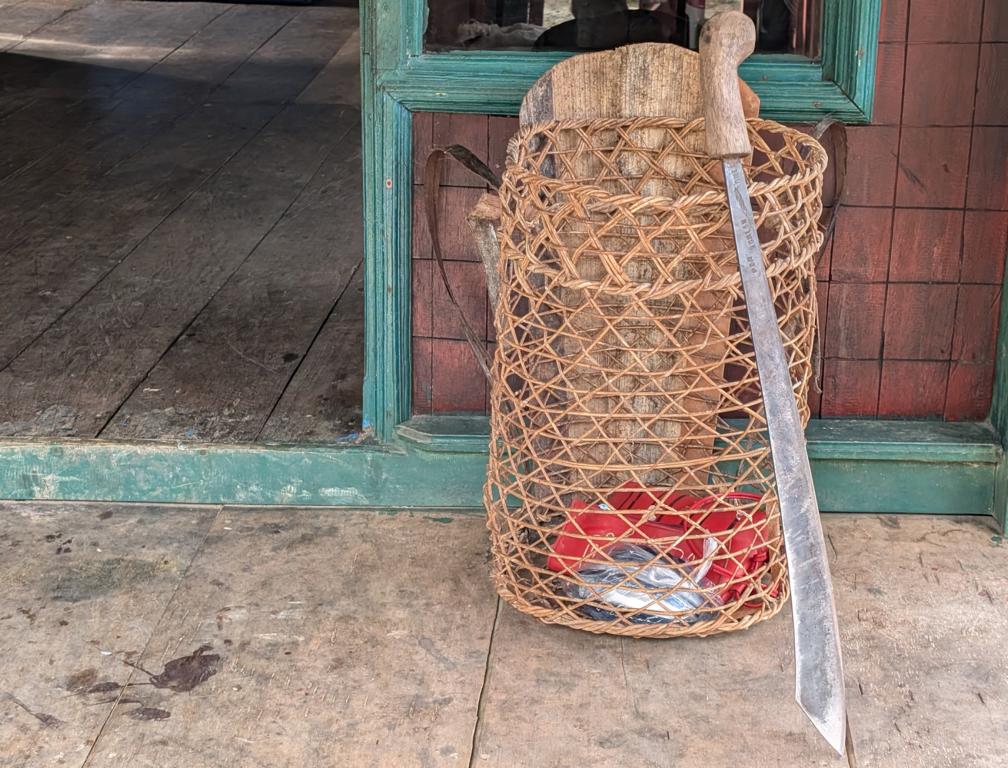
Most of these baskets are crafted by individuals outside the forest who specialize in whittling and weaving various types of baskets. This includes Roigen (chicken-coop baskets), Soso (small fruit-holding baskets), and rattan crafts.
For a basketry craftsman, it takes about two to three days to build one Opa rattan basket. The buyer’s cost will be approximately IDR 100,000 per piece (roughly $6.40 as of November 2023).
Tuku – the women’s basket.
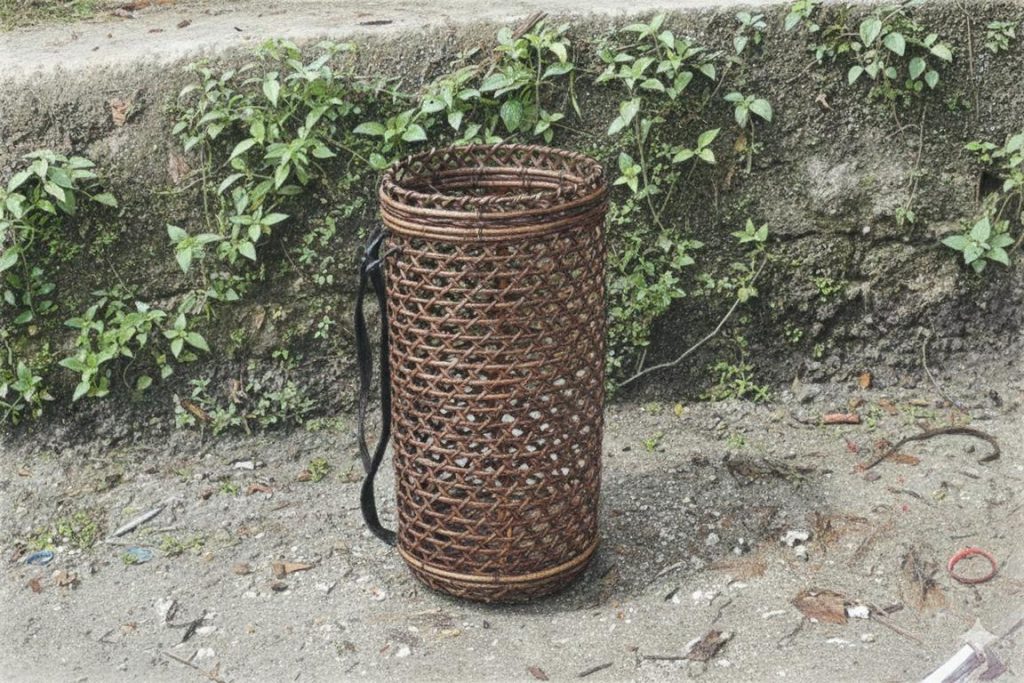
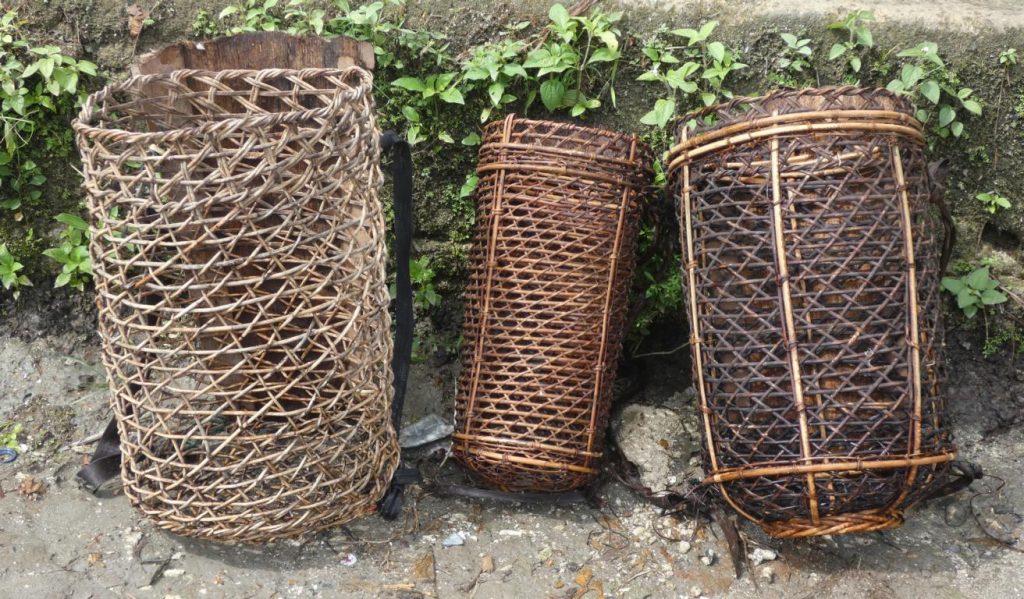
Tuku is a traditional basket similar in shape to an Opa but smaller, typically worn by women. With a more feminine design and a smaller size, this basket is better suited for women.
Jarakjak – the large-sized carrying basket.
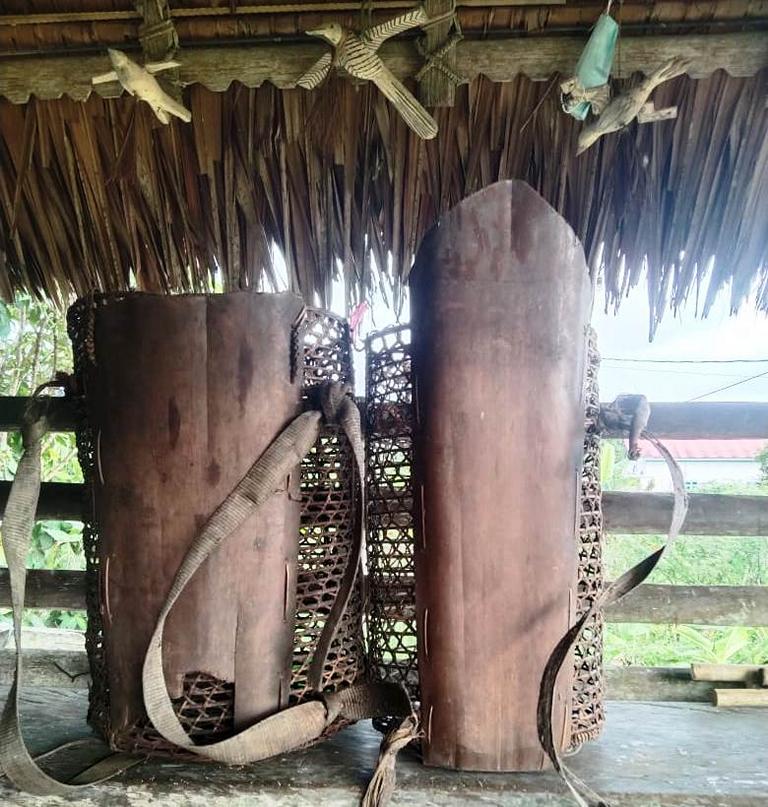
They are typically used to transport firewood, durians, or coconuts. For the untrained eye, it is often difficult to differentiate between these two types, as there are also larger Opa’s and smaller Jarakjak’s.
However, a Jarakjak typically has an inner diameter of at least 50 cm, and it is made from unsplit round rattan vines.
O’orek – the open-walled carrier frame.
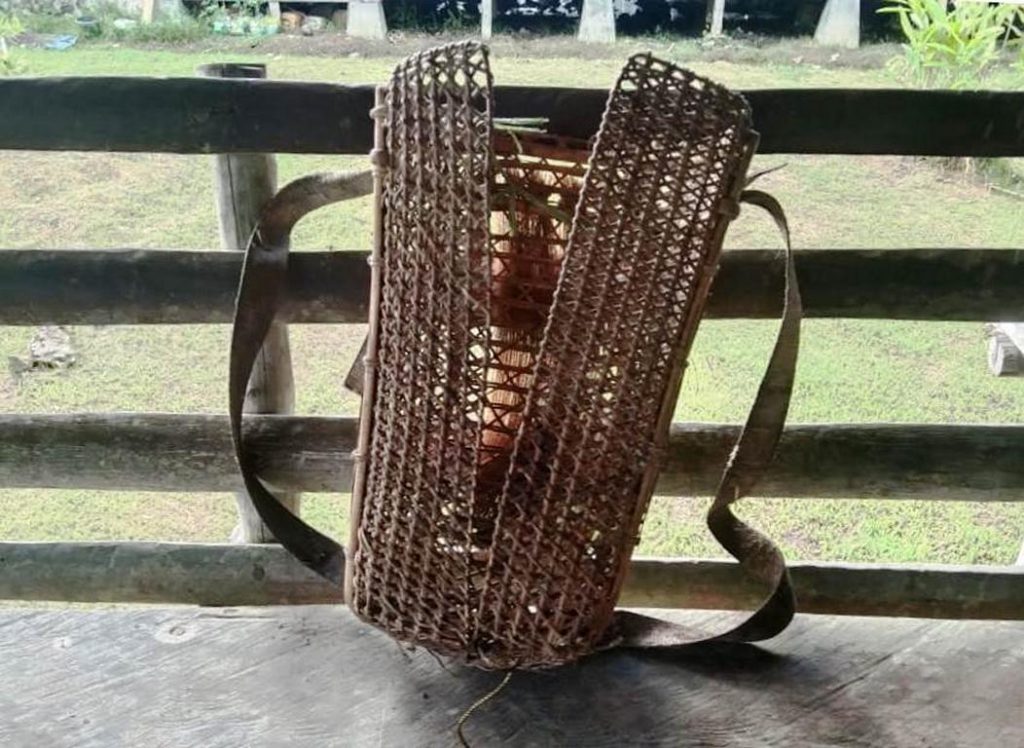
This type of basket is again based on the Opa design. Its marked difference, however, is that the sidewalls are not connected but are open to the rear. The bottom is the same as in Opa baskets. An O’olek is designed to carry large, unwieldy objects with its walled carrier frame. A typical example would be piglets carried with this contraption or larger chunks of firewood.
Bolokbok – a sago leaf sheath basket.
Four sago palm leaf sheaths will be sewn with rattan vines for Bolokbok baskets. Moreover, another sago leaf sheath reinforces the side with the backstraps.
This basket design is conical, reinforced at the upper rim and bottom with a double string of Pelege rattan vines. The bottom itself is loosely woven from the same rattan species.
These openings at the bottom indicate that the Bolokbok basket is primarily designed to carry materials that require side protection. However, it can also drain water from the bottom.
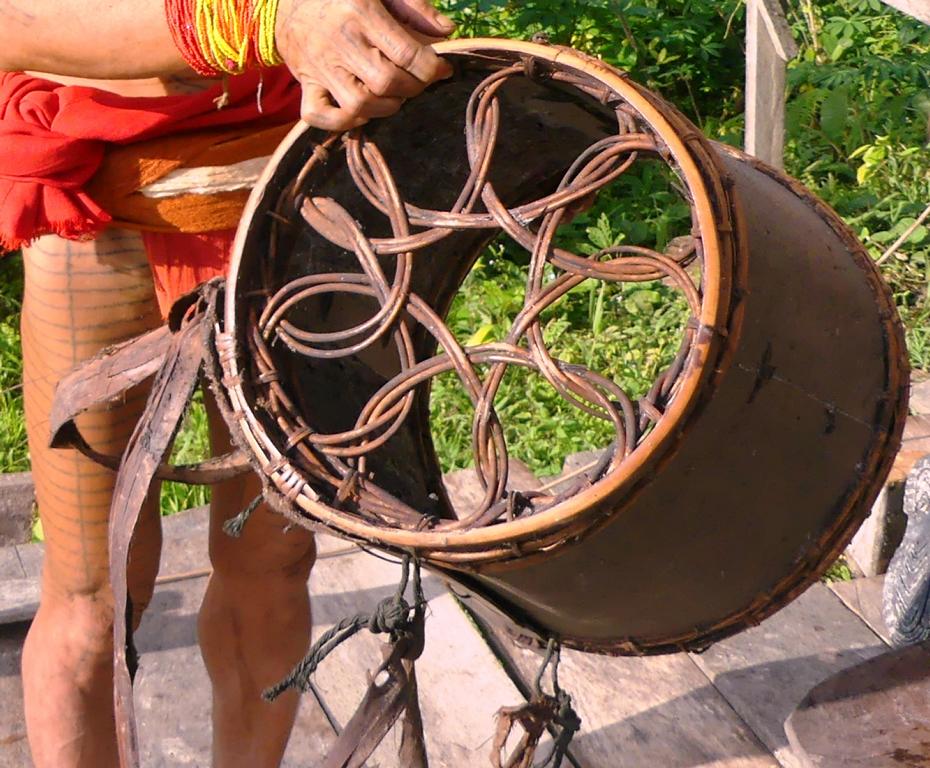
Bolokbok baskets are therefore specifically designed and used to transport sago from the processing site to the Uma and to collect and transport greenery.
One afternoon, Aman Naru and I went into the forest and had to carry this basket. On that occasion, I experienced its use. Aman Naru was gathering various leaves, herbs, and reeds for a ceremony that evening. Moreover, he placed all the cut greenery into my basket, which soon overflowed. I had to be careful not to smash or harm any leaves, as all of them were needed for the ceremony.
So, the leaves and other greenery were protected on one side as we slithered through the dense forest. They could not fall through the bottom openings, and the basket was lightweight and convenient to carry – an ingenious invention.
Lessons learned about carrying baskets:
- Backstraps are made from the stringy fiber of tarap trees.
- People use five types of carrying baskets.
- The Opa basket is entirely woven from rattan and used to transport taro corms, bananas, and other lightweight agricultural goods.
- The Tuku is a smaller Opa basket used by women to carry small items.
- Jarakjak is its larger version, designed to carry heavier loads, such as coconuts or durians.
- The O’orek carrying frame is open in the rear and can therefore accommodate still bulkier goods.
- Furthermore, the Bolobok is primarily used to collect and transport sago and lightweight greenery.
- All baskets use a sago leaf sheath to protect the carrier’s back.
.



